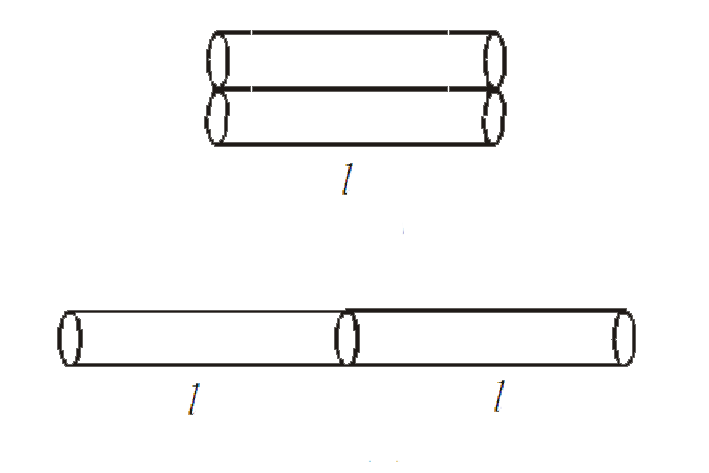Three methods in which transfer of heat can be done
Step-by-Step Solution:
1. Understanding Heat Transfer: Heat transfer is the process of thermal energy moving from one object or substance to another due to a temperature difference.
2. Identifying the Methods: There are three primary methods of heat transfer: conduction, convection, and radiation.
3. Conduction:
- Definition: Conduction is the transfer of heat through a solid material without the movement of the material itself.
- Explanation: When molecules in a solid are heated, they vibrate more and collide with neighboring molecules, transferring energy. This method is most effective in solids.
4. Convection:
- Definition: Convection is the transfer of heat through fluids (liquids and gases) by the movement of the fluid itself.
- Explanation: In convection, warmer parts of the fluid rise while cooler parts sink, creating a circulation pattern that transfers heat throughout the fluid.
5. Radiation:
- Definition: Radiation is the transfer of heat in the form of electromagnetic waves, such as infrared radiation.
- Explanation: Unlike conduction and convection, radiation does not require a medium (solid, liquid, or gas) to transfer heat. It can occur in a vacuum, such as the heat from the sun reaching the Earth.
Final Summary: The three methods of heat transfer are conduction, convection, and radiation. Each method has its unique mechanism and is effective in different situations.
---
- Definition: Conduction is the transfer of heat through a solid material without the movement of the material itself.
- Explanation: When molecules in a solid are heated, they vibrate more and collide with neighboring molecules, transferring energy. This method is most effective in solids.
- Definition: Convection is the transfer of heat through fluids (liquids and gases) by the movement of the fluid itself.
- Explanation: In convection, warmer parts of the fluid rise while cooler parts sink, creating a circulation pattern that transfers heat throughout the fluid.
- Definition: Radiation is the transfer of heat in the form of electromagnetic waves, such as infrared radiation.
- Explanation: Unlike conduction and convection, radiation does not require a medium (solid, liquid, or gas) to transfer heat. It can occur in a vacuum, such as the heat from the sun reaching the Earth.
टॉपर्स ने हल किए ये सवाल
- HEAT TRANSFER Book:ICSEChapter:HEAT TRANSFER Exercise:Questions (Write T for True and F for False. Correct the false statements)
Explore 5 Videos
- HEAT TRANSFER Book:ICSEChapter:HEAT TRANSFER Exercise:Exercises (Section I) Name the following
Explore 10 Videos
- HEAT TRANSFER Book:ICSEChapter:HEAT TRANSFER Exercise:THEME ASSIGNMENT
Explore 11 Videos
- FORCE AND PRESSURE Book:ICSEChapter:FORCE AND PRESSURE Exercise:Picture Study
Explore 4 Videos
- LIGHT ENERGYBook:ICSEChapter:LIGHT ENERGYExercise:THEME ASSIGNMENT D. Statements given below are incorrect. Write the correct statements.
Explore 7 Videos
समान प्रश्न
What are the three methods in which a body can be charged?
View SolutionName the three modes of transfer of heat.
View SolutionName the mode of transfer of heat in the gas
View SolutionName the three methods by which hydrous substances can be made anhydrous.
View SolutionName the mode of transfer of heat in the liquid
View SolutionName the mode of transfer of heat in the solid
View SolutionName the mode of transfer of heat in the vacuum
View SolutionTwo rods of same length and transfer a given amount of heat 12 second, when they are joined as shown in figure (i). But when they are joined as shwon in figure (ii), then they will transfer same heat in same conditions in

View SolutionWhen two bodies and are kept in contact, it is found that heat gets transferred from Q to P.
Which physical quantity determines the direction of transfer of heat energy?
View SolutionThere is no transfer of heat at thermal equilibrium.
View Solution